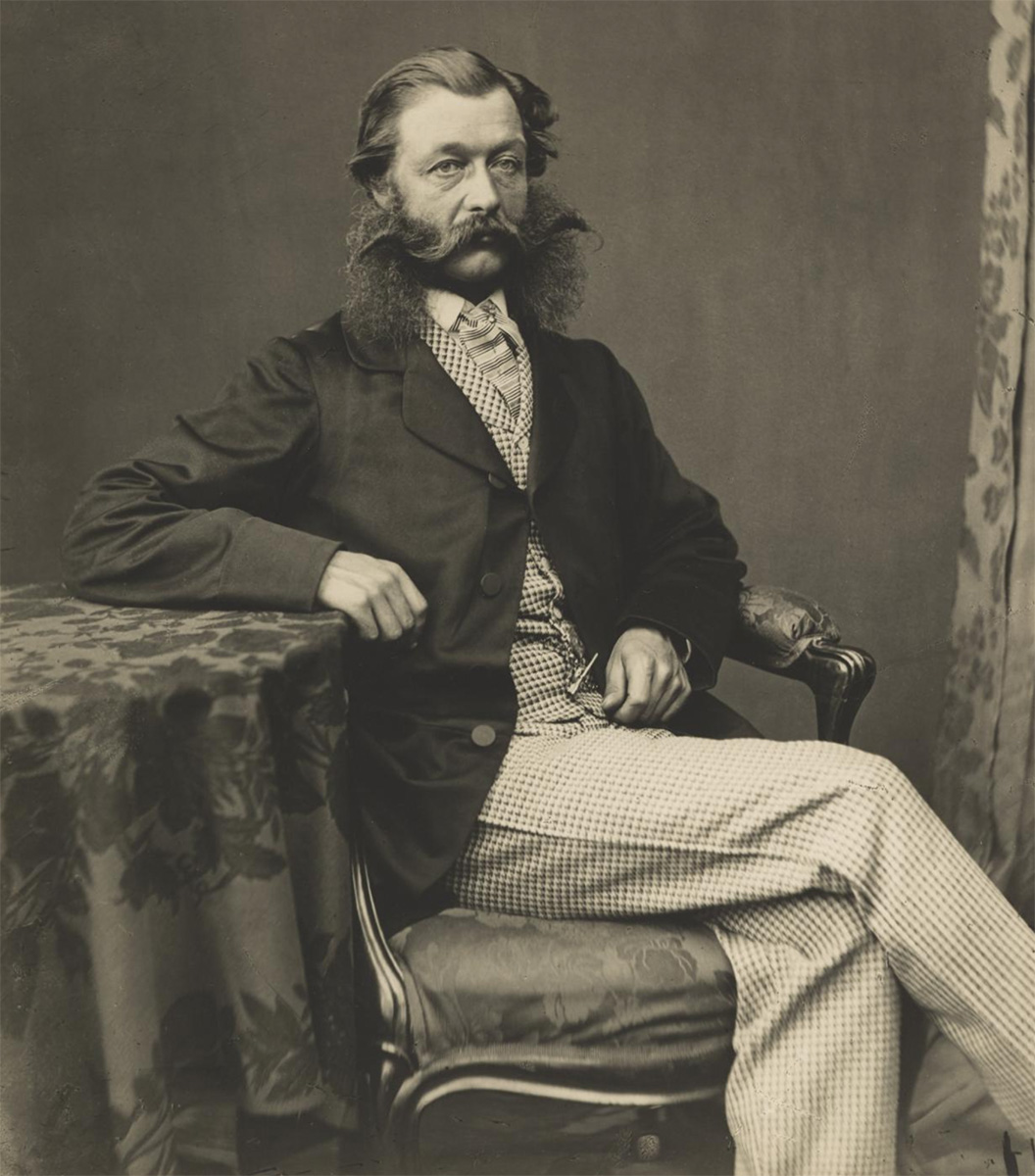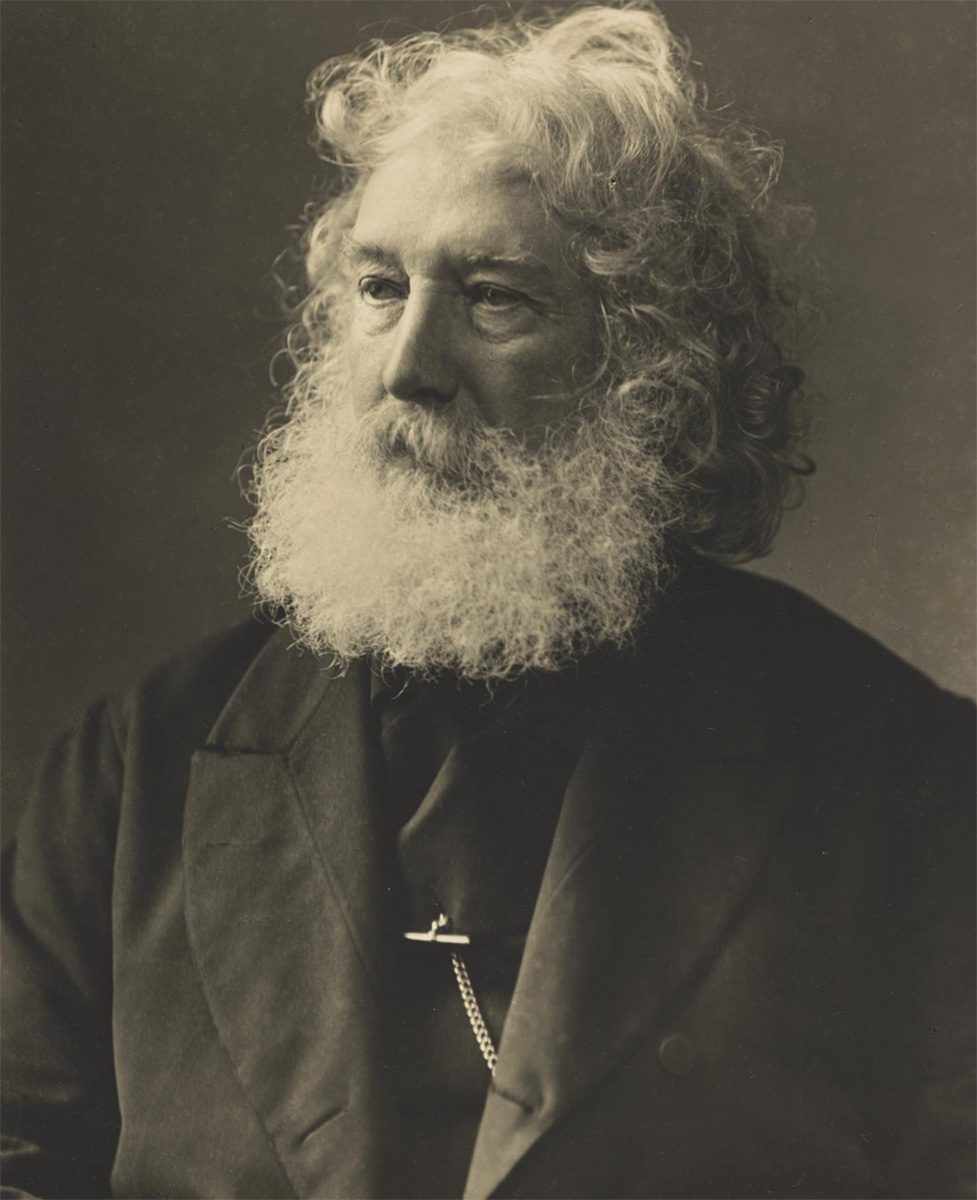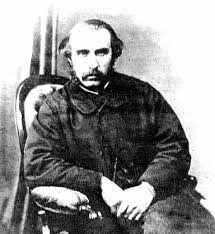John Moffat was a Scottish portrait photographer, but he also produced stereoscopic photographs. Apart from being a successful businessman, he was also an amateur painter and musician and had eight children, of whom several were as multi-talented as their father.
Moffat was born on the 26 April 1819 in Aberdeen, Scotland into the family of Francis Moffat (b.1782) – a bookbinder – and Elizabeth Moffat (nee Rankin – aka Rankine). He grew up in a family of three sisters and one brother but would have had another sister and two other brothers had they not died very young before he was born. Not a lot is known about John’s childhood but his father appears to have been interested in the arts and sciences. He was also keen on education and John learnt French at school, a skill which he used later in his photographic researches.
By 1847, at the age of 28, John Moffat appears in directories as having his own business as an engraver at 24 Gardiner’s Crescent, Edinburgh. He continued to advertise from that address until at least 1849. On the 19th May 1847 John married
Ellen Notman (aka Helen Notman) at South Leith, Midlothian, Scotland. John’s first child, Ellen Jane Moffat, was born c 1849 according to the 1851 census when she was stated as being two years old. Ellen was also known as Nelly. She grew up to work in the photography business and was living with John in 1881 according to the census that year despite her mother and father getting a divorce many years beforehand. The census in 1851 shows John, aged 31, at 1 Windsor Street, Edinburgh with his young daughter Ellen J Moffat and a 20-year-old servant called Margaret Rae. His occupation was stated as a picture engraver master. It is almost certain that John and his wife Ellen had parted, and more probably had divorced, at this stage. On 22 June 1851 John married his second wife,
Sophia Maria Knott, whose brother was the photographer James Brown Knott. John and Sophia were married in Edinburgh.

Mr Kennedy / Scottish National Portrait Gallery
Creative Commons CC by NC © John Moffat
John Moffat started his first photographic studio in 1853 but he was still advertising his skills as an engraver from the same address in 1854; apparently, he was migrating from engraver to photographer during this period. He certainly confirmed 1853 as the date that his photography business was established by printing the fact on the reverse of his carte de visite mounts.
John’s second child, and his first child with his new wife Sophia, was born in 1854 and named Frank Pelham Moffat. Frank was very involved with the family firm from the early 1870s and he eventually took over when his father died in 1894. Frank was also a fine photographer and was involved at an early stage in colour photography – probably using the
Autochrome process. Another child, Sophia Elizabeth Moffat was born in 1856. She never married and lived on until the 1930s. John and Sophia had a second son, Fred (John F) Moffat, in or about 1857. Kate Rankin Moffat was born on the 30 November 1859 and remained a spinster all her life. She is said to have had an active life and embraced new ideas such as motor cars. She died in 1954 in Edinburgh.
John Moffat is said to have taken a set of daguerreotype photographs of
Queen Victoria and
Prince Albert when they visited the Crystal Palace Exhibition in London in 1855 although the whereabouts of these photographs is not now known. The
Photographic Society of Scotland was formed in March 1856 and John Moffat was an active member so he would have met many early photographers and photographic researchers including
Sir David Brewster and
William Henry Fox Talbot who John later photographed in his studio at 103 Princes Street in 1864. A unique Day Book is still in existence from 1856 to 1858 and contains details of the studio customers, charges, expenses and profits on a weekly basis. It also records, interestingly, details of the weather which appears to have had a significant effect on business turnover.
In 1857 John went to France and eventually went to Canada to become a farmer. By 1858 John had moved his studio again to 60 Princes Street, an address that is connected to his brother-in-law
James Brown Knott. At that time, the carte de visite had not become popular and John would have still been producing ambrotypes in smart little cases.
Kate Rankin Moffat was born on 30 November 1859 and remained a spinster all her life. She is said to have had an active life and embraced new ideas such as motor cars. She died in 1954 in Edinburgh. Arthur Elwell Moffat was born later in 1861 and went on to be a painter in watercolour and oils as well as a musician. He exhibited on many occasions and won medals for his work. It is likely that he worked in the family business as a colourist. Arthur died in 1943.
In 1861 John Moffat moved his studio again, this time further west along Princes Street to better premises at 103 Princes Street where he stayed until 1875. In the same year he became a member of the Council of the prestigious
Photographic Society of Scotland. The family continued to grow when Alfred Edward Moffat was born on the 4th December 1863. Alfred became very musical and played the violin and was a musical arranger. He studied in Germany where he met a local girl and got married. Alfred died in the 1950s. John and Sophia’s last child was a daughter called Alice May Moffat. She grew up and married a prominent local businessman – James Watt – a member of the Edinburgh Stock Exchange.

Unknown Man with White Beard / Scottish National Portrait Gallery
Creative Commons CC by NC © John Moffat
The Photographic Society of Scotland, of which John was a Council Member, was wound up in 1871 and was effectively replaced by the
Edinburgh Photographic Society. John Moffat later became the President of the Edinburgh Photographic Society until shortly before his death in 1894.
1873 was a major year in the life of the Moffat photographic enterprise as John moved into a prestigious studio at 125 Princes Street. This studio was run in parallel with the one at 103 Princes Street until 1875 and then became the sole outlet until the 1920s; way after John Moffat’s death.
John was a determined businessman and turned to the courts on more than one occasion. In the autumn of 1875 John Moffat took another well-known Edinburgh photographer,
Robertson Ross of Ross & Pringle, to court for non-payment for photographic work carried out. He won his case. An interesting article about John’s studio appeared in the Mercantile Age on the 9th September 1887 which described a visit to 125 Princes Street. A description of the way that children were photographed was particularly interesting, as follows:
"Above this room (the main studio) is another room with a stronger light than the one below, and eminently suitable for taking children’s portraits. The cameras used here have wonderfully sensitive pneumatic shutters, so instantaneous and noiseless in their action that frequently the operator can engage the attention of the sitter by some pleasing manoeuvre, and when his educated eye catches a pleasing expression, he can without moving from his position, command chemicals and old Sol to instantly do the rest before the young patron is aware of it."
In a second section, the reporter comments on John Moffat’s business acumen as follows
"We are please to notice that everywhere great economy is manifest. Mr. Moffat, understanding the chemistry of his trade, is successful in recovering a very great quantity of his silver. We witnessed the operation of washing and recovering, and we were altogether taken by surprise at the percentage of the chloride of silver recovered"
Other comments from elsewhere also support this view that John Moffat was a canny businessman and that he was always interested in new ideas and processes. John Moffat died on the 5th. March 1894 and an obituary was printed in the
British Journal of Photography in the March issue of that year. A quote from the end of the obituary is very touching –
"He was ever kind and considerate to his employees and generous in his treatment of them, while, in ordinary business matters all knew him to be honourable and upright in the highest degree".
Source: www.cartedevisite.co.uk


